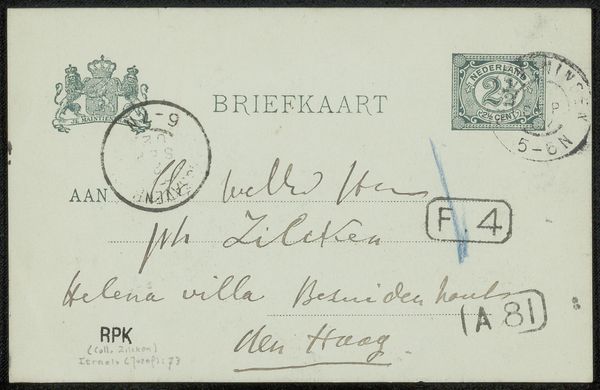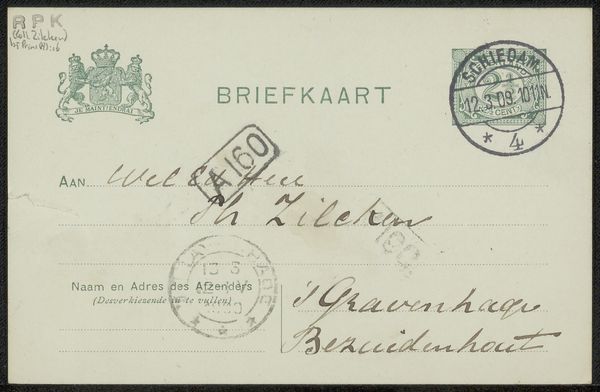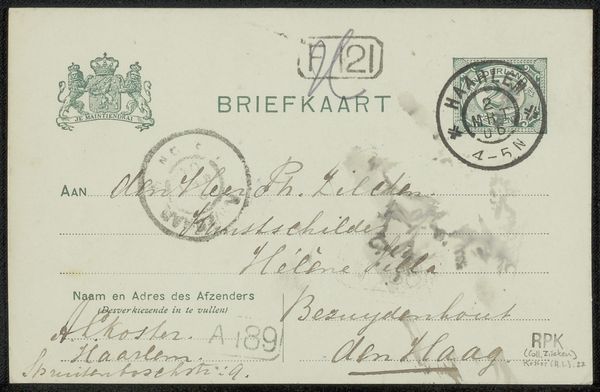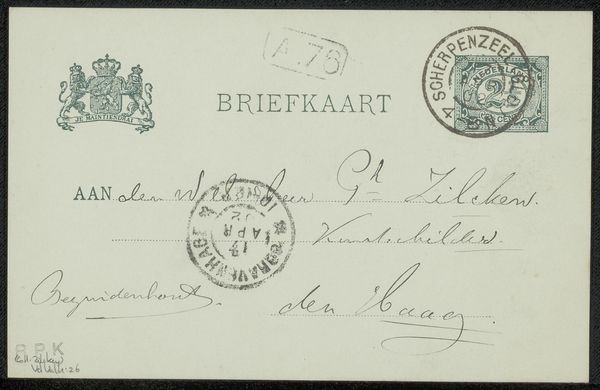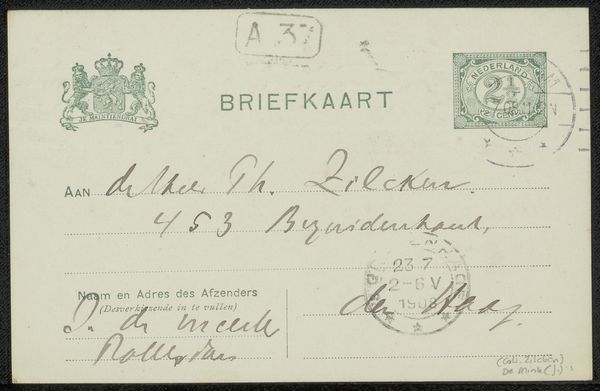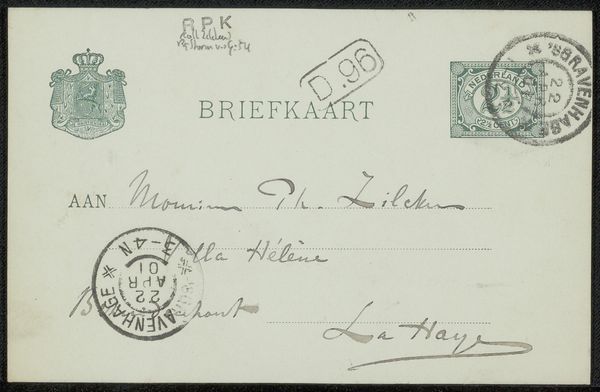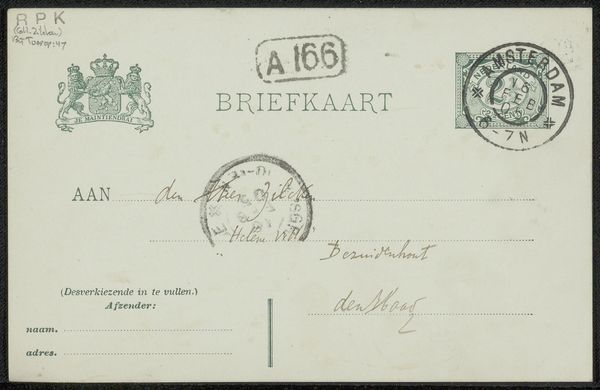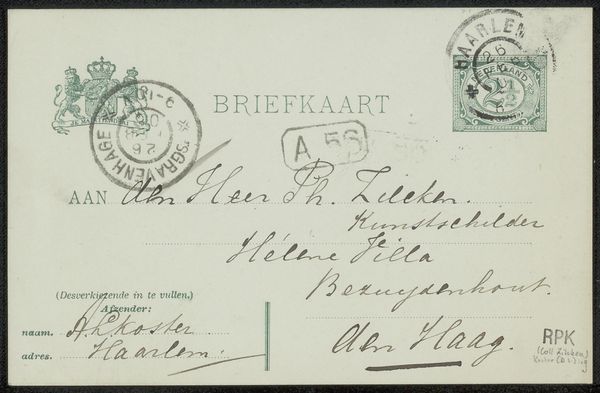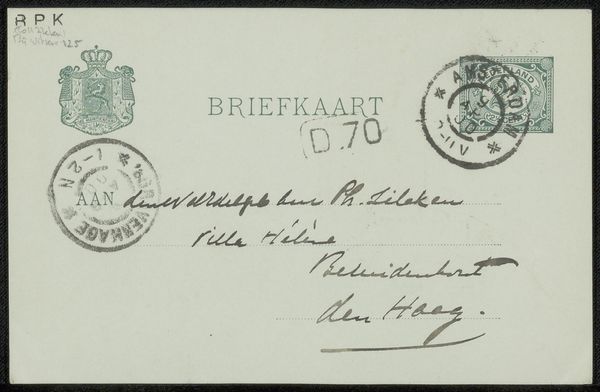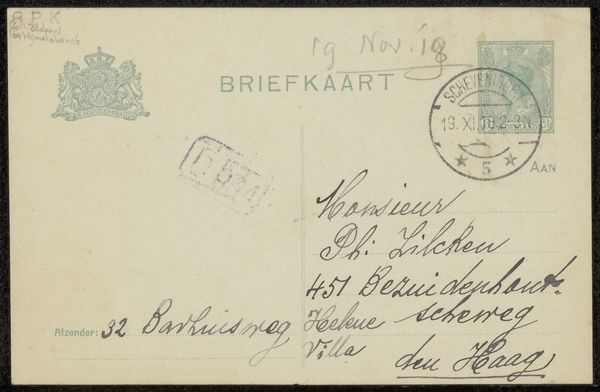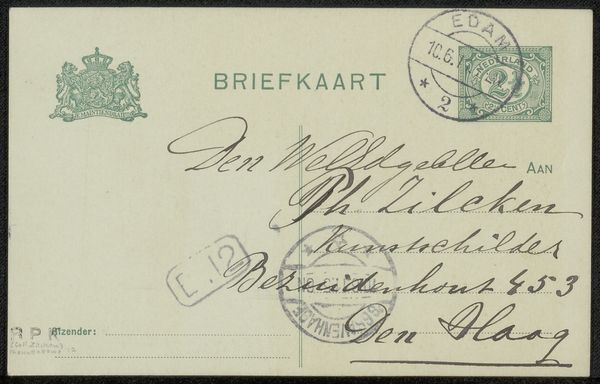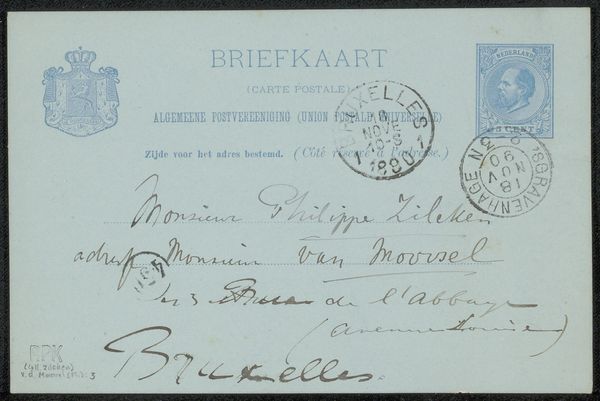
drawing, paper, ink, pen
#
portrait
#
drawing
#
comic strip sketch
#
pen sketch
#
hand drawn type
#
paper
#
personal sketchbook
#
ink
#
ink drawing experimentation
#
pen-ink sketch
#
pen work
#
sketchbook drawing
#
pen
#
storyboard and sketchbook work
#
sketchbook art
#
calligraphy
Copyright: Rijks Museum: Open Domain
Curator: So, here we have Johannes de Koo's "Briefkaart aan Philip Zilcken," believed to be from before 1928. It’s an ink and pen drawing on paper, a sort of portrait in miniature. Editor: It feels like peeking into someone’s private correspondence, a quick little message dashed off with practiced ease. The flourishes in the handwriting alone have a certain charm! Curator: Absolutely, and consider this was before instant communication. These little dispatches created entire networks, reinforcing bonds but also reinforcing status and colonial power in very particular ways. Handwriting was everything! Editor: You're right, there's something incredibly telling in the choice of script, the weight of the ink. It really speaks to the level of education and cultural capital at play. Makes me wonder what other systems are invisibly structuring what we communicate today, like algorithmic style guides! Curator: Or even the affordances of email itself, eh? Anyway, I wonder what Zilcken was up to. Was this simply a friendly hello? A summons? There’s a ghostliness to the fragment. Editor: It reminds me that communication is never neutral, and archives such as these must contain hidden assumptions. The intimacy, or even mundane casualness on display, obscures histories of power. Who were these two? What world did they inhabit? Were the implications of something seemingly so small actually far-reaching? Curator: Beautifully put. It's also just incredibly satisfying as a piece of mark making—a study of efficiency if you will. No strokes wasted, just information delivered with flair. And a beautiful demonstration of calligraphic style. Editor: It really speaks to the artist's mastery. We are living, fragmented history here, contained on paper no bigger than your hand. I imagine this piece tucked in a wallet or drawer. Each viewing offers a portal to revisit assumptions of both past and present. Curator: It is almost like reading the tea leaves: tantalizing, mysterious, offering an insight into the possible futures of de Koo and Zilcken, which have already happened… but are forever caught on this briefkaart. Editor: Indeed. These little documents ask us, implicitly, to be as critical about our assumptions as de Koo and Zilcken once were within the confines of their time. They serve as an important reminder!
Comments
No comments
Be the first to comment and join the conversation on the ultimate creative platform.
